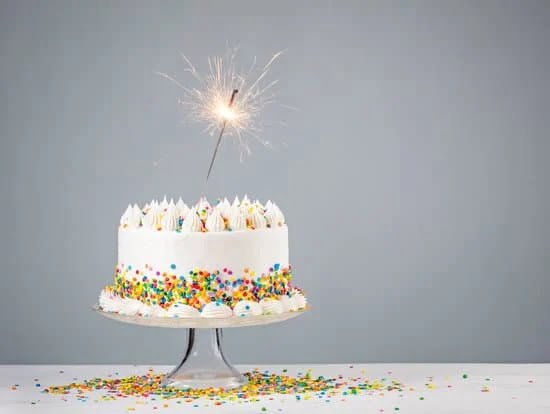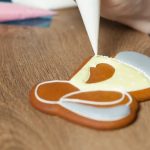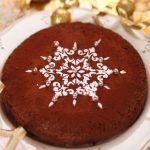Cake decorating has become a popular hobby and profession in recent years, allowing individuals to express their creativity and create visually stunning edible masterpieces. One of the key ingredients in achieving professional-looking cake designs is cake decorating paste. Whether you’re an experienced baker or just starting out, understanding the basics of cake decorating paste is essential for creating beautiful cakes that not only look amazing but also taste delicious.
Cake decorating involves the artful arrangement of icing, frosting, and other decorative elements on a cake to create visually appealing designs. It allows bakers to transform plain cakes into works of art, suitable for any occasion. Cake decorating paste plays a vital role in this process as it provides texture, durability, and flexibility needed to bring intricate cake designs to life.
There are different types of cake decorating pastes available in the market, each with its own unique qualities and uses. Fondant is one of the most commonly used pastes due to its smooth finish and versatility. Gum paste, on the other hand, is perfect for creating delicate sugar flowers and other intricate decorations. Another popular option is modeling chocolate which can be easily shaped and molded into various forms.
In order to achieve professional results with cake decorating, understanding how to work with different types of cake decorating paste is crucial. From coloring and shaping techniques to troubleshooting common issues, honing your skills with cake decorating paste will help you take your creations to the next level. So whether you’re a beginner or an experienced baker looking to expand your repertoire, let’s delve into the world of cake decorating paste and discover its endless possibilities.
The Basics of Cake Decorating
Cake decorating is a creative art form that has gained immense popularity in recent years. With the rise of baking shows, social media, and the desire for unique celebrations, cake decoration has become an essential aspect of creating visually appealing cakes. At the heart of cake decoration lies the use of cake decorating paste – a versatile medium that allows bakers to create intricate designs and transform a simple cake into a work of art.
What is Cake Decorating?
Cake decorating involves various techniques and tools to adorn cakes with different designs, textures, and colors. From birthday parties to weddings and everything in between, cake decorators use their skills to customize cakes according to the occasion. It goes beyond simply frosting a cake but entails using different types of cake decorating pastes and techniques to create eye-catching designs that wow guests.
The Significance of Cake Decorating Paste
One of the key elements in achieving professional-looking cake designs is the use of cake decorating paste. Cake decorating paste refers to specialized mediums such as fondant, gum paste, and modeling chocolate that are used to create intricate details on cakes.
These pastes have properties that make them more pliable and moldable than regular icing or frosting. This allows decorators to cover cakes smoothly, create sculptural elements, make figurines, produce sugar flowers, and add decorative accents without compromising on taste or texture.
Cake decorators rely on these pastes because they provide a blank canvas for their creativity while offering structure and stability to their designs. The result is exquisite cakes that not only look stunning but also taste delicious. The variety of options available when it comes to cake decorating paste means that decorators can cater to different design requirements and explore limitless possibilities when it comes to transforming ordinary cakes into extraordinary creations.
Whether you’re an amateur baker or a seasoned professional, understanding the basics of cake decorating is crucial before delving into more advanced techniques. By familiarizing yourself with various cake decorating pastes and their uses, you can expand your repertoire of cake designs and bring your creative visions to life. So let’s explore the world of cake decorating paste and uncover the many benefits it offers in creating show-stopping cakes.
Understanding Cake Decorating Paste
Cake decorating paste plays a crucial role in the world of cake decoration. It adds the perfect finishing touches and allows bakers and decorators to achieve professional-looking cake designs. But what exactly is cake decorating paste?
Cake decorating paste, also known as modeling paste or sugar paste, is a pliable substance that can be molded and shaped to create various decorations for cakes. It comes in different types, each with its own unique properties that cater to different design needs.
One popular type of cake decorating paste is fondant. Fondant has a smooth and stretchy texture, making it perfect for covering cakes and creating a flawless surface. It can also be rolled out thin to create delicate details like ruffles, bows, or even intricate patterns.
Gum paste is another commonly used cake decorating paste. It has a firmer texture compared to fondant, which makes it ideal for creating three-dimensional decorations like flowers, figures, or other intricate designs. The firmness of gum paste allows it to hold its shape well and dry hard once formed.
Modeling chocolate is yet another option for cake decorators. Made from melted chocolate mixed with corn syrup, modeling chocolate offers the flexibility of clay-like consistency and the delicious taste of chocolate. It can be sculpted into various shapes and easily blended together for seamless designs.
By using these different types of cake decorating pastes, decorators have endless possibilities in creating stunning designs on their cakes. Whether it’s covering an entire cake or shaping intricate figurines or even crafting beautiful sugar flowers, the right choice of cake decorating paste ensures that every detail is achieved with precision.
Overall, understanding the role of cake decorating paste opens doors for countless creative opportunities in cake design. With the wide variety of pastes available in the market today, bakers and decorators can experiment with different textures and techniques to elevate their creations from simple cakes to works of art.
Benefits of Using Cake Decorating Paste
Versatility and Creativity
One of the major benefits of using cake decorating paste in cake design is its versatility. Cake decorating paste, such as fondant, gum paste, and modeling chocolate, offers a wide range of possibilities for creating intricate and detailed designs on cakes.
These pastes can be easily shaped, molded, and sculpted into various shapes, allowing decorators to let their imagination run wild. Whether it’s covering an entire cake or creating small figurines or sugar flowers, cake decorating paste provides endless opportunities for creativity.
Moreover, cake decorating paste allows decorators to achieve professional-looking designs with ease. With traditional frosting alone, it can often be challenging to create sharp edges or flawless finishes. However, using cake decorating paste provides a smooth canvas that allows for precise detailing and a polished appearance. The use of cake decorating paste also ensures that the design stays intact over time without smudging or melting.
Enhancing Flavor and Presentation
Another advantage of using cake decorating paste is the ability to enhance the flavor and texture of a cake. Fondant, for example, adds a unique sweetness and chewiness that complements the underlying sponge or filling. In addition to taste enhancement, using cake decorating paste creates a visually appealing presentation that elevates the overall look of the cake.
Cake designers can use different colors and shades to match any theme or occasion. The smooth finish achieved with cake decorating paste provides an excellent backdrop for vibrant colors or elegant monochrome designs. Additionally, decorations made from these pastes are often more lifelike and eye-catching than those created solely with icing.
Longevity and Simplicity
Cake decorating paste also offers practical advantages by increasing the longevity of decorated cakes. Unlike traditional buttercream frosting that may melt at room temperature or during transportation in warm weather conditions, cake decorating paste helps maintain the shape and design until it is time to be served. This makes it an ideal choice for elaborate designs or events that require cakes to be displayed for an extended period.
Furthermore, working with cake decorating paste is relatively simple and straightforward, especially for beginners. Fondant, gum paste, and modeling chocolate are readily available in pre-made forms or can be made at home using basic ingredients. They can be rolled out or molded onto cakes with just a few tools, making them accessible to those who may not have extensive cake decorating experience.
Overall, the use of cake decorating paste offers numerous benefits in achieving professional and visually stunning cake designs. From versatility and creativity to flavor enhancement and simplicity, it is no wonder that cake decorators around the world rely on these pastes to create edible works of art.
Different Uses of Cake Decorating Paste
Cake decorating paste is a versatile and essential ingredient that can be used in various ways to create stunning cake designs. Here are some different uses of cake decorating paste:
- Covering Cakes: One of the primary uses of cake decorating paste, such as fondant or gum paste, is to cover cakes smoothly and create a flawless finish. Rolled fondant is a popular choice for covering cakes due to its smooth texture and ability to provide a clean canvas for further decoration. By using different colors of fondant or gum paste, bakers can create beautiful patterns, textures, or even custom designs on the surface of the cake.
- Creating Figurines: Cake decorating paste can also be used to sculpt figurines or characters that can adorn the top of a cake. Gum paste is particularly suitable for this purpose as it dries hard and holds its shape well. Bakers can mold gum paste into shapes such as roses, animals, or even personalized cake toppers to bring their design vision to life.
- Making Sugar Flowers: Another creative use of cake decorating paste is in crafting delicate sugar flowers that add an elegant touch to cakes. Fondant or gum paste can be shaped into petals and leaves, which are then assembled together to form lifelike floral arrangements. With the right tools and techniques, bakers can create intricate sugar roses, tulips, orchids, or any other flower imaginable.
Using these different techniques with cake decorating paste allows bakers and decorators to customize each cake according to specific themes, occasions, or preferences. The possibilities are vast when it comes to creating visually appealing designs using cake decorating pastes.
Here are some examples of stunning creations achieved using cake decorating pastes:
- A wedding cake adorned with intricately crafted sugar flowers in soft pastel hues.
- A children’s birthday cake featuring fondant figurines of their favorite cartoon characters.
- A celebration cake covered in smooth ganache and decorated with a fondant ribbon and bow.
These examples showcase the versatility of cake decorating paste and its ability to elevate a simple cake into a work of art. Whether it’s through covering, sculpting, or crafting sugar flowers, cake decorating paste offers endless opportunities for creativity and innovation in cake design.
Tips and Tricks for Working with Cake Decorating Paste
Working with cake decorating paste can be a fun and rewarding experience, but it can also be challenging at times. In this section, we will provide you with some helpful tips and tricks to ensure that your cake decorating projects are successful.
Firstly, it is important to handle cake decorating paste with clean hands. Before you start working with the paste, make sure your hands are thoroughly washed and dried. This will help prevent any dirt or oils from transferring onto the paste, which could affect its texture and appearance.
When coloring cake decorating paste, it is best to use gel or powder food coloring instead of liquid coloring. Liquid coloring can make the paste too sticky or wet, making it difficult to work with. Gel or powder coloring has a more concentrated pigment and won’t alter the consistency of the paste as much.
To shape cake decorating paste into different designs or figures, dust your hands, tools, and work surface with confectioners’ sugar or cornstarch. This will help prevent sticking and make it easier to manipulate the paste without losing its shape. If the paste becomes too dry while working, you can apply a small amount of vegetable shortening to soften it back up.
It is also important to work quickly when shaping cake decorating paste as it tends to dry out fairly fast. If you need to take a break during the process, cover the unused portion of paste tightly in plastic wrap or keep it in an airtight container. This will help prevent the paste from drying out prematurely.
Lastly, if you encounter any cracks in your cake decorating paste while working with it, don’t worry. Simply moisten your fingertips with water or a small amount of shortening and gently smooth over the cracks until they blend seamlessly.
By following these tips and tricks for working with cake decorating paste, you’ll be able to create stunning cakes that are sure to impress.
Cake Decorating Paste Recipes
Cake decorating paste is a crucial component in creating beautifully designed cakes. While there are various types of cake decorating pastes available in the market, making your own homemade paste can be a fun and rewarding experience. Below are some easy-to-follow recipes for making different types of cake decorating paste:
1. Fondant:
– Fondant is a versatile cake decorating paste that can be rolled out and draped over cakes, providing a smooth and polished finish. Here is a simple recipe for making fondant at home:
Ingredients:
- 1 package (16 oz) of mini marshmallows.
- 2 to 3 tablespoons of water.
- 2 pounds (8 cups) of powdered sugar.
- Food coloring (optional).
Instructions:
- In a microwave-safe bowl, melt the marshmallows and water together in the microwave for about 30 seconds or until melted.
- Gradually add powdered sugar into the melted mixture, stirring with a wooden spoon until it becomes too difficult to continue stirring.
- Transfer the mixture onto a powdered sugar-dusted surface and knead it like dough until smooth and pliable.
- If desired, add food coloring while kneading until the desired shade is achieved.
- Wrap the fondant tightly in plastic wrap and let it rest at room temperature for at least an hour before using.
2. Gum Paste:
– Gum paste is known for its ability to create intricate decorations, such as flowers and figurines, that harden when dried. Here’s a basic recipe for making gum paste:
Ingredients:
- 4 cups of sifted powdered sugar.
- 2 teaspoons of gum tragacanth powder or tylose powder.
- 5 tablespoons of warm water.
Instructions:
- In a large bowl, sift powdered sugar to remove any lumps.
- Add gum tragacanth powder or tylose powder to the powdered sugar and mix well.
- Gradually add warm water to the dry ingredients, stirring until it forms a dough-like consistency.
- Knead the gum paste on a powdered sugar-dusted surface for about 8 to 10 minutes until smooth and elastic.
- Wrap the gum paste in plastic wrap and let it rest at room temperature for at least 30 minutes before using.
These recipes are just the starting point for creating your own homemade cake decorating paste. Feel free to experiment with different flavors, colors, and textures by adding extracts, food coloring, or even cocoa powder. Homemade cake decorating paste adds a personal touch to your cake designs and allows you to customize them according to your preferences. So, get creative in the kitchen and let your imagination take flight as you explore the world of cake decorating paste.
Troubleshooting Common Issues with Cake Decorating Paste
Working with cake decorating paste can be a fun and rewarding experience, but it is not without its challenges. As beginners dive into the world of cake decorating, they may encounter some common issues when using cake decorating paste. In this section, we will identify these common challenges and provide helpful solutions to overcome them.
One common issue that beginners may face is cracking or breaking of the cake decorating paste. This can occur when the paste becomes too dry or is rolled out too thin.
To prevent cracking, it is important to keep the paste moist by kneading it well before use and covering it with plastic wrap when not in use. If you find that your paste is dry, you can add a small amount of water or edible oil to restore its pliability.
Another challenge that may arise is sticking of the cake decorating paste to work surfaces or tools. This can make it difficult to roll out or shape the paste effectively. To prevent sticking, sprinkle a small amount of cornstarch or powdered sugar on your work surface and rolling pin before working with the paste. You can also lightly grease your hands and tools with vegetable shortening to minimize sticking.
Drying out is another issue that can occur when working with cake decorating paste, especially if it is left exposed for too long. To prevent drying, always wrap any unused portion tightly in plastic wrap or store it in an airtight container. If you find that your paste has dried out, you can try adding a small amount of glycerin or edible oil and kneading it until it becomes pliable again.
By recognizing these common issues and applying these troubleshooting tips, beginners can overcome challenges when working with cake decorating paste and create professional-looking cake designs with ease. Remember, practice makes perfect, so don’t be afraid to experiment and learn from each experience.
Conclusion
In conclusion, cake decorating paste is an essential tool for creating visually stunning and professional-looking cake designs. The different types of cake decorating pastes available in the market, such as fondant, gum paste, and modeling chocolate, offer versatility and allow for intricate details in cake decorations.
Using cake decorating paste not only enhances the visual appeal of cakes but also improves the flavor and texture. Whether it is covering cakes, creating figurines, or making sugar flowers, cake decorating paste provides endless possibilities for creativity and design.
For those interested in trying their hand at cake decoration, working with cake decorating paste may seem intimidating at first. However, with the right techniques and tips on handling, coloring, and shaping the paste, anyone can create beautiful designs. It is important to remember that practice makes perfect and that troubleshooting common issues that may arise when working with cake decorating paste is part of the learning process.
In summary, understanding and utilizing cake decorating paste are crucial steps toward achieving professional-level cake designs. By experimenting with different techniques and unleashing their creativity, readers can elevate their baking skills to new heights. So go ahead – embrace this art form and let your imagination run wild with the endless possibilities offered by cake decorating paste.
Frequently Asked Questions
What is cake paste?
Cake paste, also known as cake batter or cake mixture, refers to the combination of ingredients used to make a cake. It typically includes flour, sugar, eggs, butter or oil, and various flavorings such as vanilla or cocoa powder.
The ingredients are mixed together until a smooth and cohesive batter is achieved. This cake paste serves as the base for baking a cake and can be flavored and customized according to individual preferences.
What is a paste used for decorating modern cake?
In modern cake decorating, a paste commonly used is fondant. Fondant is a smooth and pliable icing-like substance that can be rolled out and draped over cakes to create a sleek and polished finish.
It is made from melted marshmallows or glycerin with powdered sugar added until it reaches the desired consistency. Fondant allows for intricate designs, decorations, and textures on cakes, making it ideal for creating visually appealing cakes for special occasions.
Is Sugarpaste the same as icing?
Sugarpaste is not exactly the same as icing, although they share some similarities. Sugarpaste is a type of icing commonly used in cake decorating that has a smooth and pliable texture similar to fondant.
It is made from powdered sugar mixed with glucose syrup or glycerin to form a soft dough-like consistency. While both sugarpaste and icing are used for covering cakes and creating decorative elements, sugarpaste tends to have a smoother finish when rolled out compared to traditional frosting or icing techniques which involve spreading or piping buttercream frosting onto the cake’s surface.

Welcome to our cake decorating blog! My name is Destiny Flores, and I am the proud owner of a cake decorating business named Cake Karma. Our mission is to provide delicious, beautiful cakes for all occasions. We specialize in creating custom cakes that are tailored specifically to each customer’s individual needs and tastes.





